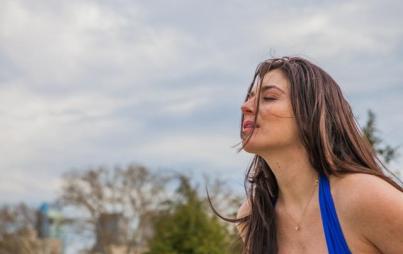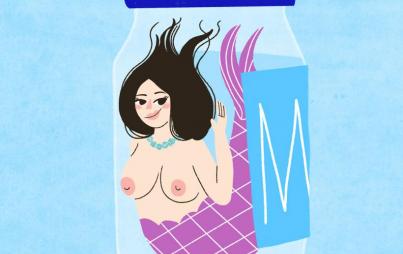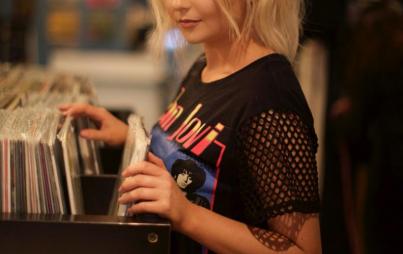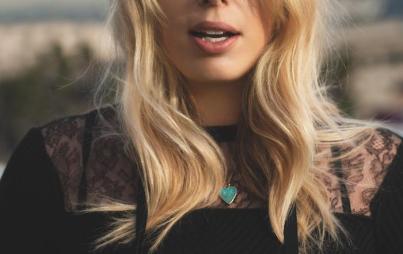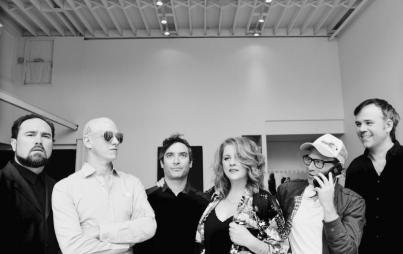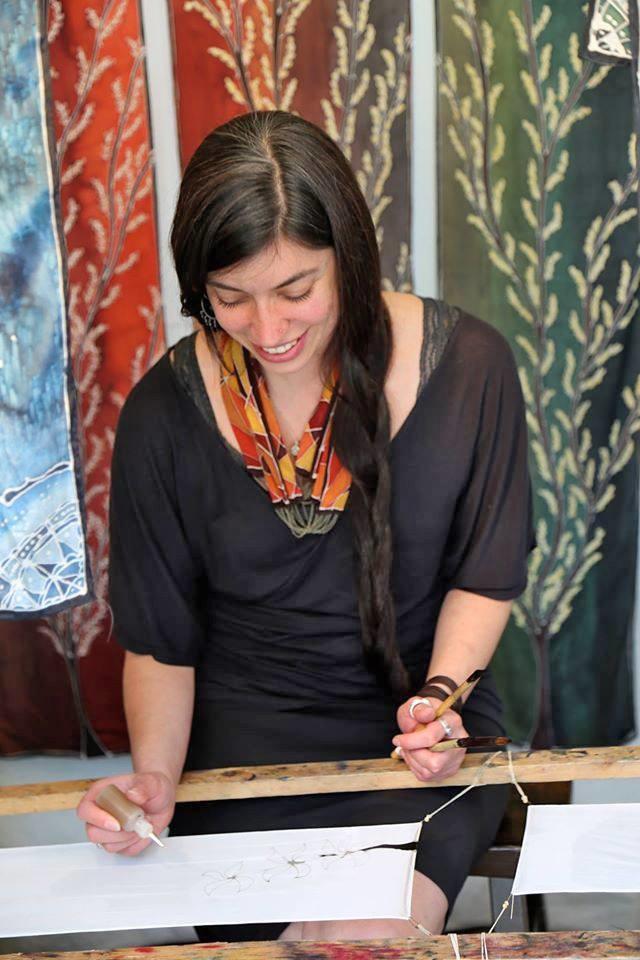
As much as we love traditional art that's meant to be hung on a wall or displayed on a shelf, wearable art is so much more fun. That's why we're big fans of artist Cheryl Frances Cameron, who paints ornate, nature-inspired designs straight onto silk scarves. Her artistic creations are meant to be worn, loved, and lived in. Since leaving her job as a web developer, Cheryl has turned her silk-painting business, Cygnet Silks, into her full-time job. She sells her scarves online, at art shows, and every weekend at the Portland Saturday Market.
We talked to Cheryl about turning your creative passion into a job, the constant hustle of self-employment, where to find inspiration (hint: Bjork), and how stubbornness can be more important than talent. Read on to get inspired, and follow Cygnet Silks on Facebook and Instagram to keep up with Cheryl's latest art projects and adventures.
How did you get started in art in general, and specifically, in silk painting?
I have always been an artsy person—I was making dresses for my dolls, painting, doing beadwork, all sorts of things, for as long as I can remember. As an adult I fell into a semi-normal life, working in web development for some years, but it became clear that it wasn't the right field for me.
When I was 27 I felt it was a matter of survival that I have my life centered around my art. Not doing that left me feeling bottled up and unfulfilled, so it was necessary for my sanity and happiness. I was painting on canvas a bunch, which felt good, and I did a couple of small art shows through friends. I took some drawing classes, because I figured I should know how to draw if I was going to paint, and while I was there my teacher mentioned that she painted silk. I never saw her work, but it sparked my interest and I started researching, got some supplies, and started playing with it.
My first attempts looked awful, but it felt right. It was very freeing—I could paint and not hold too tight to how it turned out, since you can't erase anything. That was good for my mind as an artist—not to over-edit and censor myself; just to create and trust the process. If it looks dumb when it's done, just set it aside and start a new one. I never had any formal training in silk painting, just researching and experimenting and messing up so much. Which is very educational!
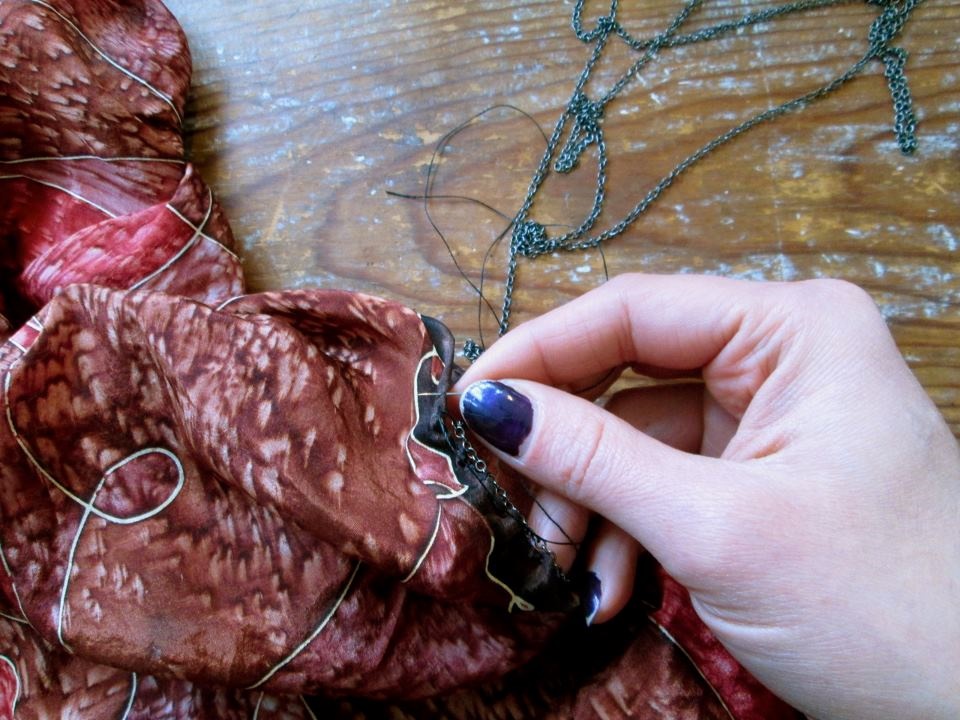
At what point did you realize you wanted to transition your artistic talent into a full-fledged business? What was that process like?
It was the obvious course for it to take. I was already freelancing, doing web development, so self-employment was familiar territory. I sold my silks at a couple of small art walks in Urbana, Illinois, and then at a weekly farmers market, and it was enough to get me thinking that if I did it on a larger scale, I wouldn't need a "regular job." It felt like the only way to go. I didn't really know what else to do with myself, since I didn't want to do web development full-time. When I moved to Portland after a couple of years painting in Illinois, I immediately applied to the Saturday Market to see if I could have a consistent venue. I found I could sell enough to stay afloat, and that was huge for me, so I phased out the web work, and have been going on just silk painting ever since.
What does a "normal" work day look like for you?
I'm not sure there is such a thing . . . I generally make a coffee or tea and take a little time to write my journals and think about my master plans before trying to do anything productive. I have to channel my overactive mind somewhere, so I write, which helps to keep me in a good place.
My days vary based on what is most important and what I feel like working on. I try not to make myself do something if I'm not in the mood (within reason), so it doesn't become a chore. I pick the project that needs doing. I think more in weeks than days—what needs to be ready for the next show. I paint new pieces, research whatever silk painting or computer thing I'm working on, take and edit photos for the online shop and update website stuff, handle other random business things, and steam and wash the silks to set the colors and get them ready to go. The business side takes a lot of time, since it's a solo operation and I do my own web work (my old life comes in handy).
And on the weekends I pack myself up early and go set up my booth and see what happens at the market or whatever other art show I have going on.
What do you love about your work? What's your least favorite aspect of it?
I love creating, making weird stuff, and running my own show. It's like building my own little magical world. And painting is just fun. I get grouchy if I don't paint for too long; it's meditative.
I don't love having to work every weekend while my boyfriend has a normal Monday-Friday schedule. That's a work in progress . . . jumping through all the hoops to make something work on the business side of things, worrying about finding the right avenue for my work, and marketing. Rent is expensive, so you can't just go out and put up a fancy gallery on a busy street corner. The world isn't really made for artists; it's made for people who want to do things set up for optimum efficiency and making cash, not for optimum creativity. Cash is nice, but I refuse to make it the primary motivation. So it's challenging. You do have to really mean it to live life this way. But I think I'm incapable of doing anything else.
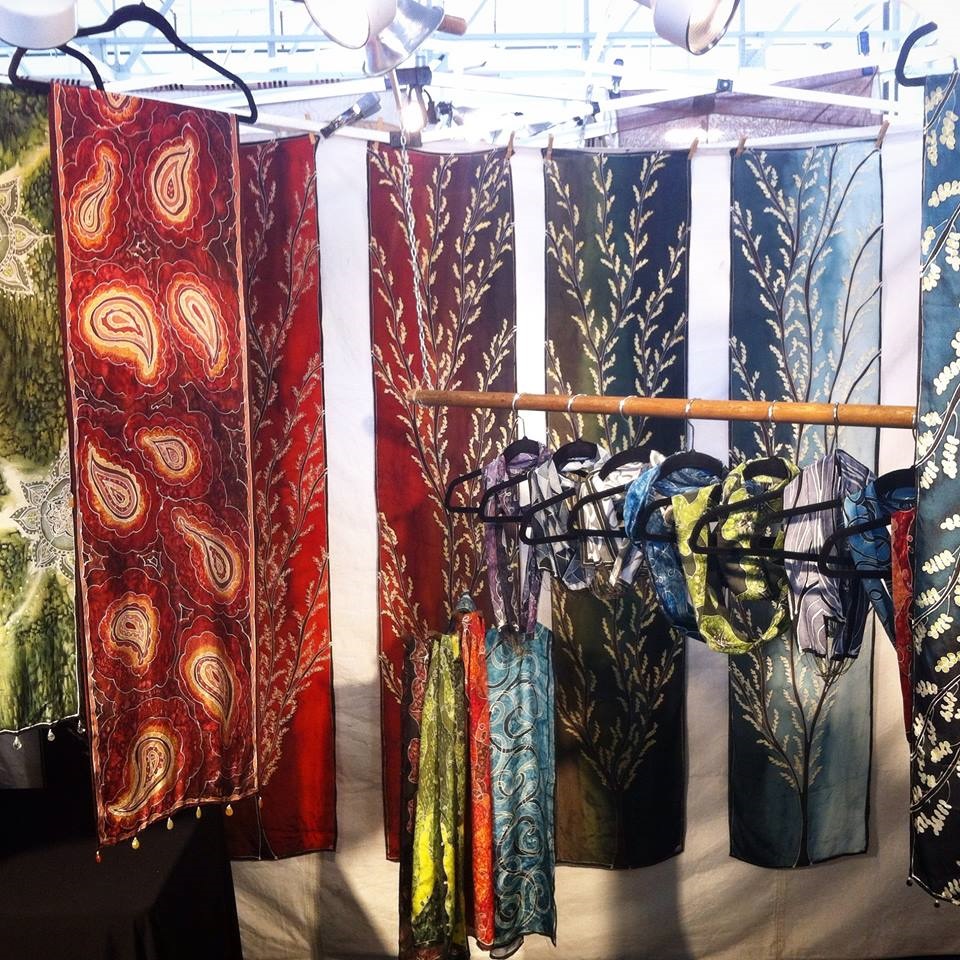
As awesome as it is to get paid for your creative passion, it can be hard to keep that passion alive when it becomes your work. Do you struggle with this at all? How do you balance your creative energy and your work obligations?
Sure. It is both good and bad. On the good side, there is something very healthy about making something and sending it out into the world, and connecting with people who are excited about the work. It feels good, totally independent of any money that comes in from it. It makes space for new work.
Art shows are probably my biggest struggle, because they are great, and they work, but they are exhausting, and you put out a lot of energy. It takes time to recharge. I keep some balance by rotating my tasks. Direct the creative side into painting new stuff, the brainy side into fiddling with computers and the website, and then sometimes I just have to stop thinking and make stuff, which is when I just put on an audiobook and paint whatever color is missing from my market stock. Library audiobooks are the greatest invention ever.
Where do you find inspiration?
I think the roots of it are in nature and a sense of seeking beauty and connection. It merges with my spirituality, and the fact that life is much deeper and more beautiful than just plain physical objects. I think people act like life is boring and normal, and forget how magical it is. But you can get emotional looking at brush strokes on canvas, or listening to wavelengths through the air, which is pretty magical, really. I think we lose touch with how wild and powerful life is.
That's the real challenge, I think. How to stay in touch with that powerful, wild side of life, and still pay the bills and wash the dishes. So I look for stuff that brings that magic into everyday life. In tangible terms it includes coffee shops, the forest, spending time with my kittens and my love, and Native American, Celtic and Mehndi/henna art. And medieval music and Bjork, obviously.
You recently started painting with natural dyes. What sparked that change? How do do you like it so far?
That has been in the back of my mind for as long as I've been painting. Synthetic silk dyes work well, but it's so hard to find out even what they are made from. What I use now is considered non-toxic, but they are petroleum based, and it's hard to know the long-term effects when I have my hands in them every day for years on end. Transitioning to natural dyes is a huge undertaking. There is almost no information about painting with natural dyes, which is a very different process from dip-dyeing fabrics. So it has involved a lot of experimenting, and learning how to get a good spectrum of colors, since each natural material has different properties. I hope one day to use only natural dyes, but it will be a gradual transition.
I'll be writing about it too, to put my information out there as I figure things out. The dream would be to make all my dyes from native plants I grow in my garden, but that might be a little excessive.
What advice would you give to other women who are looking to make a living through their art? Anything you'd wish you'd known when you started?
There's one thing that people like to say when they see artists at work at shows and such, which is "You're so talented!" It's a compliment, I guess, but it always feels like they are saying the artist is talented, and putting themselves down at the same time. I don't like it. Everyone is creative in her own way. And it bothers me, because I felt like I wasn't talented, until I got really frustrated with not living life the way I wanted. I would go crazy if I didn't channel it somewhere, and it no longer mattered whether I was any good at it. So I focused more on what felt right than what seemed logical, and was stupidly stubborn about it. And then I found people liked what I was doing, which kind of blew my mind. So stubbornness and persistence ranks so much higher than "talent." You aren't given some magical permission to be creative, you just take it because that's what you have to do. And then people love you for it. It's weird.
My advice is to trust your own compass, start somewhere, and don't worry too much about how perfect it is. Learn and let it evolve. That's a never-ending process.
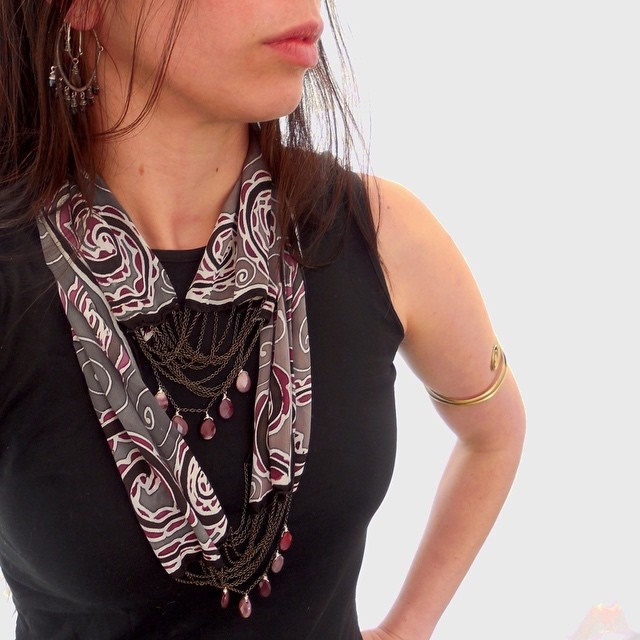
How do you see Cygnet Silks evolving and expanding in the coming years? Anything exciting in the pipeline?
I am always working on something to keep it interesting . . . like working with the natural dyes (getting indigo figured out, and how it works with painting). Also, merging painting and fashion, doing more with the necklaces I'm doing, with silk and chain and gem stones. I like thinking about how the work wears on the body, not only as a flat canvas. And merging spirituality into it, with more meditative, intuitive pieces. All of that is in the works; it's just doing more with it and finding the right avenues for each type of work.
I have a goal to create a rad art gallery/studio space/dance studio/community gathering place with artist friends one day. I love the artistic entrepreneurial movement. People being creative and making their lives and livelihood the way they like. Some folks do well in traditional jobs. But they are not for everyone!



